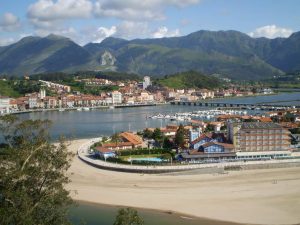
They say every step on the Camino de Santiago tells a story. However, amidst tales of picturesque landscapes and inspiring encounters, there is one less glorious, yet equally important, narrative: managing blisters.
On your pilgrimage to the Cathedral of Santiago, these small annoyances can become major obstacles if not properly addressed. Don’t worry, fellow pilgrim, we are here to guide you through this crucial aspect of your journey. We will help you learn how to tackle and overcome this common challenge with grace and determination.
Índice de contenidos
Blisters on Your Pilgrimage Along the Camino de Santiago
During your organised Camino de Santiago trip, it’s important to keep in mind some considerations that will help you have a better experience. Similarly, if you’re planning the Sarria to Santiago route for the minimum distance required to receive the Compostela certificate, these tips are also relevant.
One of these considerations is understanding and knowing how to deal with blisters. These small fluid-filled bumps can turn into uncomfortable companions if not given proper attention.
Blisters form as a result of constant friction between the skin and footwear, or even between layers of skin. In this type of adventure, the repetitive friction from long walks can cause the separation of skin layers, leading to these bothersome lesions.
It’s important to remember that blisters are indiscriminate: they can affect both experienced pilgrims and newcomers. Even if you’ve prepared meticulously and selected your footwear carefully, you may still find yourself dealing with blisters at some point during your journey.
Some factors that can increase the risk of developing blisters include humidity, heat, and lack of ventilation in your shoes. Therefore, it’s essential to pay attention to early signs of discomfort and take preventive measures to reduce the risk of blisters during your pilgrimage.
Strategies to Prevent Blisters on Different Sections of the Camino

On your journey, whether you’re walking the Camino Francés or the Camino Portugués, preventing blisters is key to keeping your feet in optimal condition.
For long days of walking through green fields and historic towns, it’s advisable to choose the right footwear. Opt for shoes that are comfortable, durable, and breathable to minimise friction. Additionally, consider using high-quality socks that absorb moisture and reduce friction on your feet.
Similarly, attention to detail is essential. Remember that your shoes should fit well to avoid excessive movement that could cause rubbing. Also, bring along protective bandages and change your socks regularly to keep your feet dry and blister-free.
Regardless of the route you choose, remember to take regular breaks to air out your feet and rest them. Not only will this allow you to appreciate the scenery around you more, but it will also reduce the chances of developing blisters due to fatigue and moisture accumulation in your shoes.
How to Treat Blisters

When venturing along the Camino del Norte or the Camino de Santiago from Tui, it’s crucial to be prepared to deal with blisters with determination and care.
If you develop a blister, stop immediately and find a comfortable place to treat it. Clean the affected area with water and soap, and avoid popping the blister to prevent infection. Cover the wound with an appropriate dressing and adjust your socks and shoes to minimise friction.
On the other hand, it’s important to maintain constant attention to your feet. If you feel any discomfort, take a moment to check your feet and treat any blister that may be developing. It’s important to keep your feet clean and dry and consider using special blister pads to protect the skin as you continue your pilgrimage.
Post-Treatment Care for Blisters
Once you’ve completed your day of walking, it’s important to provide the proper care to your feet to promote quick recovery from blisters.
After reaching your destination, remove your shoes and socks and let your feet breathe. Gently wash the affected area with warm water and soap, avoiding rubbing harshly to prevent further irritation of the skin.
If the blister has ruptured during the walk, keep the area clean and dry to prevent infection. Apply a gentle antibiotic cream and cover the wound with a specialised blister dressing, which will help protect the skin while it heals.
You may also use gel pads or special blister cushions, as they provide an extra layer of protection and comfort while your feet heal.
In the following days, keep an eye on the blister to ensure it doesn’t become infected. If you notice signs of inflammation, redness, or pus, seek medical attention immediately to avoid complications.
Remember, proper foot care after a day on the Camino de Santiago is essential to ensuring a safe and comfortable pilgrimage experience.









